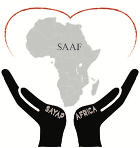In Africa, much attention must be focused on the innovation deficit and the lack of proficiency in science, technology, engineering, art and mathematics (STEAM) disciplines.
STEAM is an educational approach that incorporates the arts into the more-familiar STEM model, which includes science, technology, engineering and mathematics. STEAM programs can include any of the visual or performing arts, such as dance, design, painting, photography and writing. The focus has been on STEM fields and education for them since the late 20th century, when the ongoing shortage of technology workers began. Since that time, government agencies in many countries around the world have invested heavily in STEM education and its promotion. The emphasis on fostering STEM skills has inescapably led to decreased emphasis on other subjects in the arts and humanities, with the result that funding for them has dwindled and students have fewer arts-related options. Africa loves Art.
New technologies are revolutionizing the future of work created by global and virtual environments made up of millennial workers and consumers. In order to succeed in training the STEAM workers of the future, schools, universities and organizations must emphasize the process of “doing”, encourage collaboration and interdisciplinary problem-solving, and support risk taking – as it is these qualities combined with STEAM skills that will be at the core of the change-makers of tomorrow.
Reintegrating art and design into education has been demonstrated to increase the happiness and well-being of students. From a business and perspective, the major payoffs include better problem-solving skills and increased creativity and innovation. The integration of arts into STEM education and fields may also help encourage more participation by women in what have been male-dominated areas.
We need you and your help
It’s impossible to help people without people helping others. We always need volunteers who love to help.
